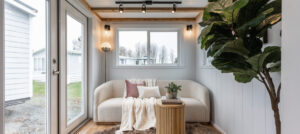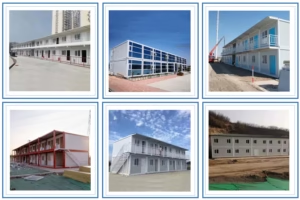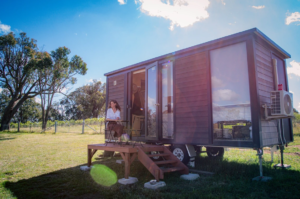Table of Contents
- Misconception #1: Container Houses Are Cheap and Low Quality
- Misconception #2: They Are Only Suitable for Temporary Housing
- Misconception #3: Container Houses Lack Modern Amenities
- Misconception #4: They Are Not Environmentally Friendly
- Misconception #5: Container Homes Are Difficult to Finance
- Misconception #6: They Are Only for Minimalists
- Misconception #7: Container Houses Are Not Durable
- Misconception #8: They Are Hard to Customize
- Frequently Asked Questions
- Conclusion
Misconception #1: Container Houses Are Cheap and Low Quality
As a general belief, container houses are sold at wholesale prices because they are made with substandard materials and have poor quality. Yes, they are less expensive than conventional homes, but that does not mean they are uncomfortable or devoid of basic comforts.
Durable and energy efficient, high-quality container houses utilize insulation materials and premium steel structures. Contrary to what most people believe, many modern container homes boast sophisticated plumbing, heating, and air conditioning, making them as comfortable as the other housing options.
To explore high-quality container houses, visit our official website: Carteroom.
Misconception #2: They Are Only Suitable for Temporary Housing
Although container houses are primarily used for mobile or temporary housing, they are increasingly being built as permanent residences.
With effective design and good quality material, these homes can last for decades. Many people and businesses utilize container homes as vacation residences, rental houses, and even as commercial properties.
For a closer look at how container houses are used in long-term living solutions, read this architectural study.
Misconception #3: Container Houses Lack Modern Amenities
Many still think that container houses do not incorporate essential modern features. In fact, container homes can be furnished with luxury kitchens, spa bathrooms, and comprehensive smart home systems.
Custom built container houses are capable of being constructed with top tier kitchen appliances, high performance insulation, and even solar panels. The amount of customization that is possible makes these homes highly competitive to conventional housing.
Misconception #4: They Are Not Environmentally Friendly
Many assume that container houses are not eco-friendly, but repurposing shipping containers actually helps reduce waste and promotes sustainability.
Additionally, modern container houses can be fitted with solar panels, rainwater harvesting systems, and eco-friendly insulation. These features make them an excellent choice for those looking for sustainable housing options.
To learn more about sustainable container living, check out this green building resource.
Misconception #5: Container Homes Are Difficult to Finance
It is sometimes said that financing a container home is near impossible, especially in the early stages of construction. However, more people are embracing these homes and lenders are starting to offer financing options.
There is more acceptance among lenders like banks, credit unions, and private lenders regarding funding container home projects. In certain situations, these homes may be funded with personal loans or construction loans.

Misconception #6: They Are Only for Minimalists
Although these homes can accommodate those who are minimalists perfectly, they are not exclusively for them.
If designed creatively, they can also be luxurious, spacious, and sophisticated in virtually all styles of living. Certain container homes have multi-levels, open floor plans, and big windows that let in natural light.
Misconception #7: Container Houses Are Not Durable
As mentioned before, shipping containers are made to endure. They are able to survive harsh oceanic transport as well as extreme weather conditions.
Container homes can last over 20 years with the right modification and maintenance. They are incredibly resistant to pests, mold, and even natural catastrophes like earthquakes and hurricanes.
For more details on container durability, visit this engineering review.
Misconception #8: They Are Hard to Customize
Container homes are very easy to change which most people do not realize. Architects and designers can change the houses so that they fit the people’s preferred layout.
The possibilities are limitless, whether it is multi-container buildings or rooftop gardens.
Visit our website for more customization options: Carteroom.
Frequently Asked Questions
1. Are container homes safe to live in?
Yes, when properly modified, container homes are safe and meet standard building codes.
2. What is the price range for container houses?
Costs vary based on size and customization, but they can start from around $10,000 for a basic unit.
3. What insulation is used for container homes?
Common options include spray foam, fiberglass, and rigid board insulation to ensure energy efficiency.
4. Can I build a container home anywhere?
It depends on local zoning laws and building regulations, so it’s important to check before purchasing.
5. How long does it take to construct a container house?
The construction timeline can range from a few weeks to several months, depending on design complexity.
Conclusion
For those considering the option of wholesaling, knowing the facts regarding typical container houses is critical. In fact, container homes are eco-friendly, customizable, and durable, which makes them an amazing complement to traditional housing.”
Check out our official website for Carteroom if you want more information about using container homes for business or residential purposes.



